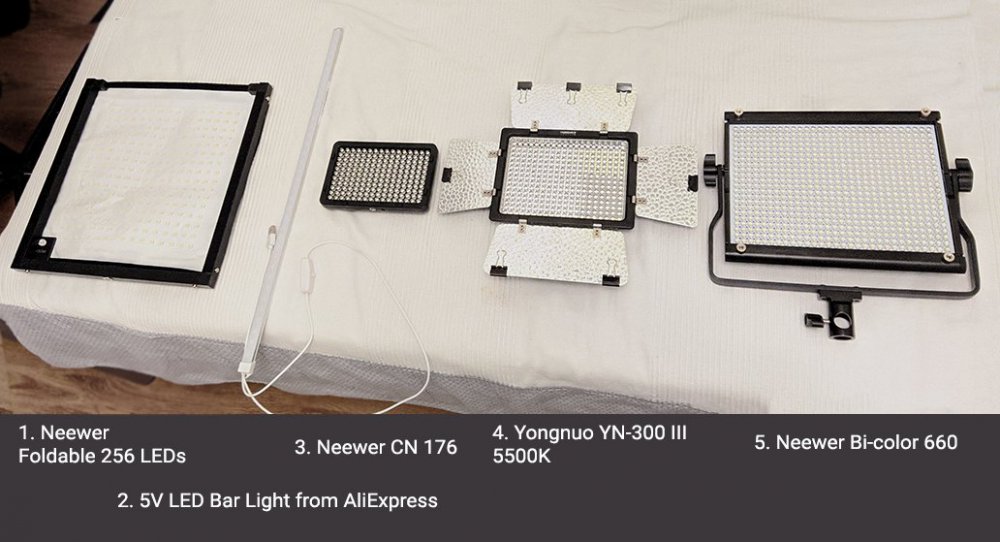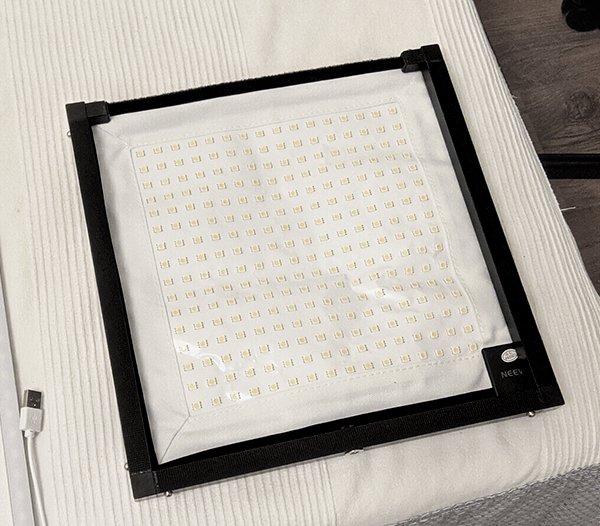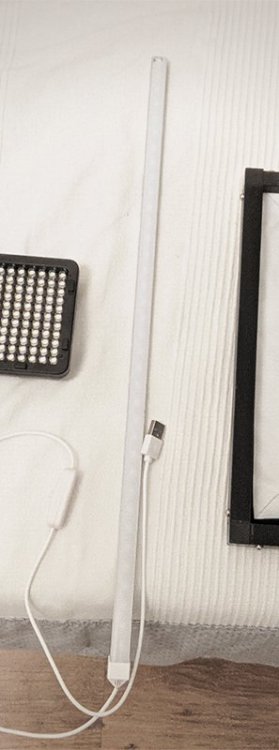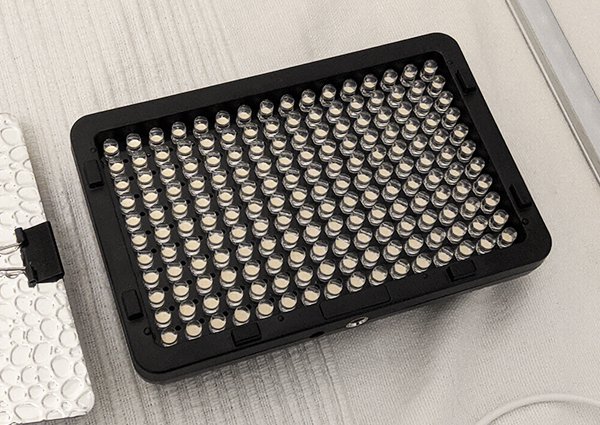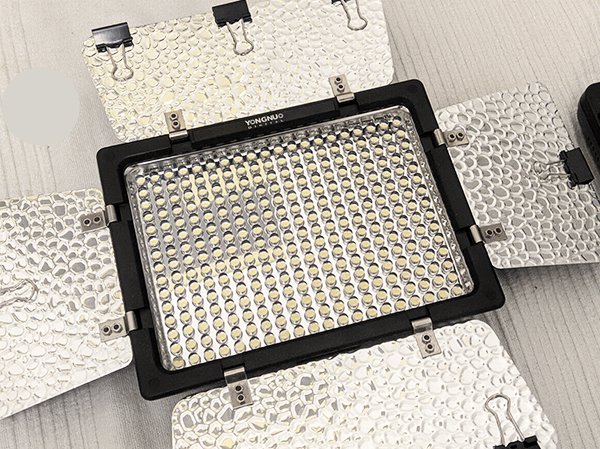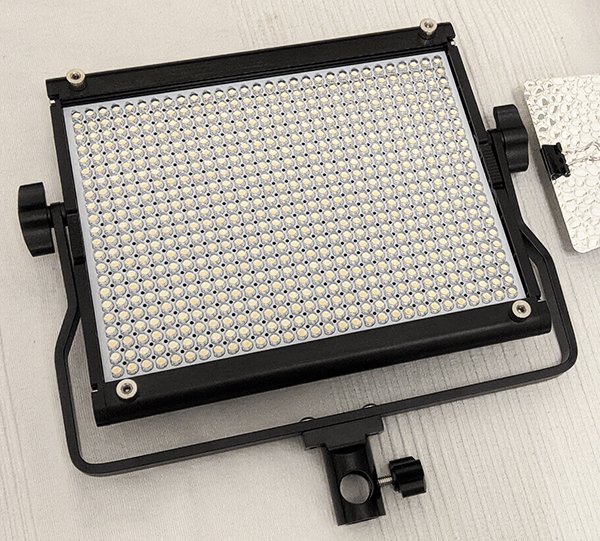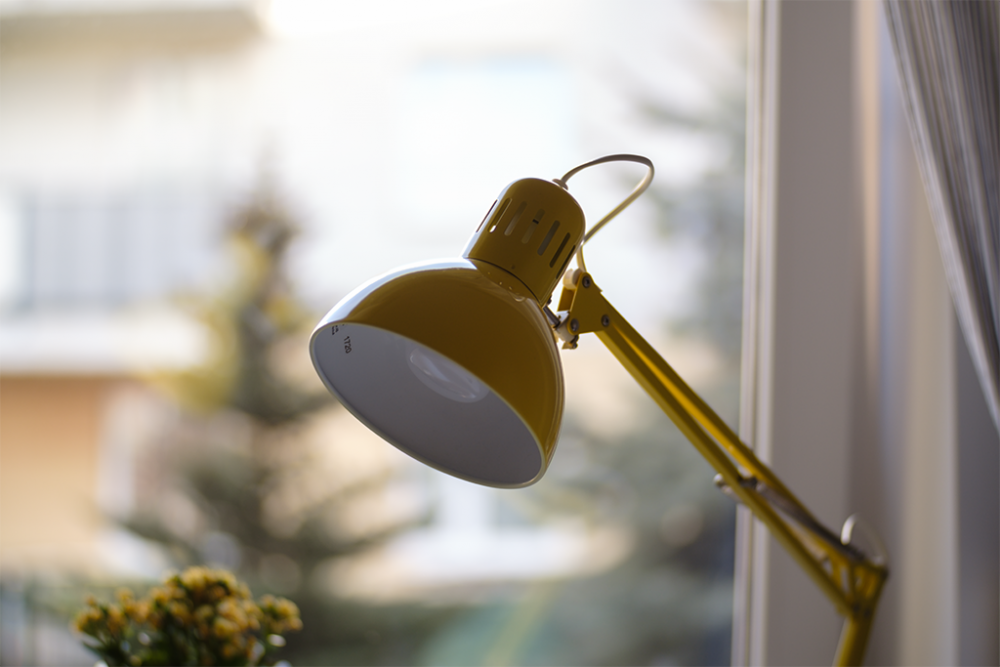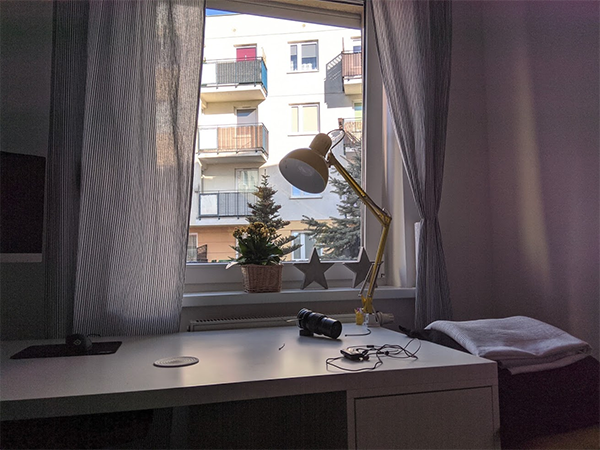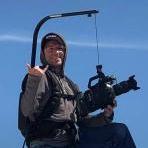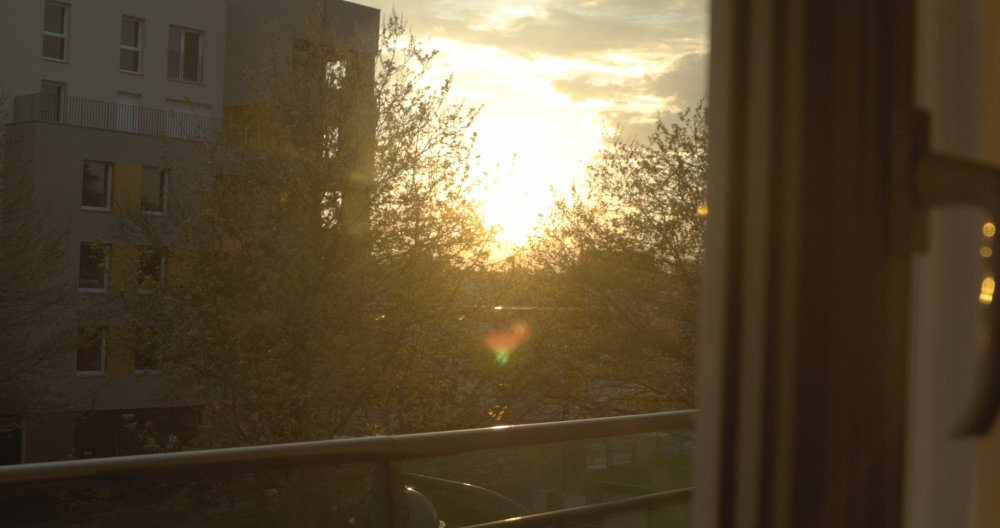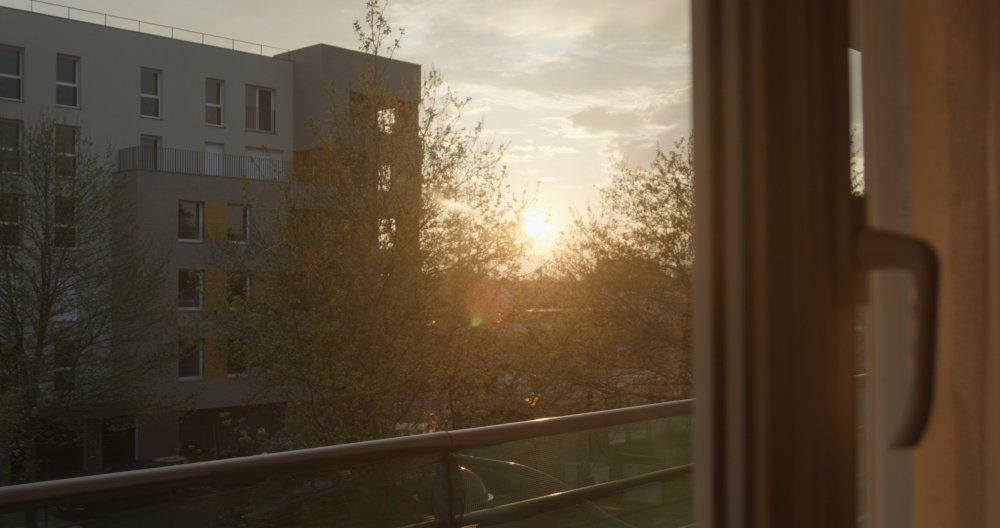Leaderboard
Popular Content
Showing content with the highest reputation on 04/19/2020 in all areas
-
I find that to be (broadly/roughly) true as well! But reason I believe is simple: when I'm busy shooting, I'm literally too busy! No time to think about upgrades. The troubles start when I'm locked in at home, with time on my hands, and an internet connection....5 points
-
Blackmagic Micro Cinema Super Guide and Why It Still Matters
graphicnatured and 2 others reacted to BenEricson for a topic
This dude shot a feature length doc with the bmpcc and the bmmcc. I think it had a festival release in 2018, but now available online. The colors out of the original bmpcc and micro have a point like quality and texture. Really beautiful.3 points -

Affordable LED lights briefly compared.
IronFilm and one other reacted to heart0less for a topic
Hiya! Some time ago I decided to complete a rather simple, but most importantly, affordable lighting setup that would be easy to carry around and to set up. LED panels ticked all these boxes, so I started to hunt for them on a sales and local Craigslist / eBay. This is what I managed to acquire: I decided to gather them all up and put together a short test comparing their light output, since it was the parameter that I cared about most. PART 1 - HOW MUCH LIGHT DO THEY ACTUALLY GIVE? I put all the lights on a lighting stand, my camera on a tripod and took photos of a cabinet that was exactly 3.5 meters (~11.5 feet) away from them. Just what you could call 'a flood mode'. No light modifiers in front, no objects in front. I measured both the lowest and the highest brightness settings and also took notice of white balance. No other lights were turned on, my room was pitch black. The first light I turned on was Neewer Foldable 256 that consists of 256 LED beads. Dozens of positive reviews on amazon praising its mobility and high output. I only got it yesterday, but truth be told, I'm not really convinced by it. Doesn't feel much sturdy and I'm quite confident that if you used it on a daily basis, it wouldn't last more than a year, especially the velcro stripes. What's more, it can only be controlled by a remote included in the package - there are no dials / knobs on the light itself, which is a pity. This one is powered via AC adapter and can't run on any batteries. It's rated at 40 W, which in my case translated to an exposure of: - at the lowest setting (10%) → f/1.4 , 1/80 s, ISO 800 which, according to a smart exposure calculators, equals EV100 = 4.3; white balance - 5550K, - at the highest setting (100%) → f/1.4 , 1/100 s, ISO 160 → EV100 = 6.9; white balance - 5600K. The second light - a cheap cabinet LED bar that I consider as a poor-man's Quasar / Astera Tube. Bought it for 4$ and features 36 LED beads. I plan to combine 3 of them together in some nicer 3D printed housing and use it as a practical light / hair light that could be put anywhere in the frame. Runs on a USB 5V - every power bank is capable of powering it. Doesn't feature any brightness control, it's either at 0 or 100%. With it I managed to get a following exposure: f/1.4 , 1/80 s, ISO 2500 → EV100 = 2.6; WB - 6000K and astonishing +60 tint (don't even ask about CRI). The third competitor - Neewer CN 176. Just like the name says - it has 176 LEDs, rated at 11W. Got it for 15$ and that included a NP-F550 battery. It's quite nice and very handy. Can be powered with a battery or an AC plug. Results: - at the lowest setting (10%) → f/1.4 , 1/80 s, ISO 3200 → EV100 = 2.3; WB - 5800K, - at the highest setting (100%) → f/1.4 , 1/80 s, ISO 250 → EV100 ~ 6.0; WB - 5700K. The fourth light - Yongnuo YN-300 III 5500K The first light I ever bought. Most feature-packed, since it can be controlled with my phone via some app. The original package included an orange card, a diffusion card, a remote and a bunch of adapters, etc. Can be powered with a battery or an AC plug. 300 daylight balanced LEDs, 18W Results: - at the lowest setting (10%) → f/1.4 , 1/80 s, ISO 1000 → EV100 ~ 4.0; WB - 5950K - at the highest setting (100%) → f/1.4 , 1/125 s, ISO 160 → EV100 ~ 7.33; WB - 5650K. Quite funny - it overpowered the foldable Neewer. And the last, but definitely not least - Neewer 660 Bi-color 660 LEDs; 330 are supposed to be 5600K and 330 - 3200 K; rated at 40W The most robust build - all metal. Feels very solid and looks expensive. Bought for 60$. Can be powered with a single battery (even though it features a dual NP-F slot) or an AC plug. Results: - at the lowest setting, daylight LEDs only → f/1.4 , 1/80 s, ISO 1600 → EV100 - 3.6; WB - 5900K - at the highest setting, daylight LEDs only → f/1.4 , 1/120 s, ISO 160 → EV100 ~ 7.3; WB - 5900K - funny thing, the photo looks EXACTLY the same as the previous one, no WB shift, no color shift, at all. - at the lowest setting, tungsten LEDs only → f/1.4 , 1/80 s, ISO 1250 → EV100 - 3.6; WB - 3600K - at the highest setting, daylight LEDs only → f/1.4 , 1/105 s, ISO 160 → EV100 - 6.9; WB - 3600K - slight tint shift - at the highest setting, both LED types → f/1.4 , 1/220 s, ISO 160 → EV100 ~ 8.15; WB - 4600K To get you an idea, how does an exposure of f/1.4 , 1/220 s, ISO 160 looks like, here is a photo taken at 8:10AM (the sun rises at 5:50 AM) with those exact parameters: A bigger picture of this scene, taken with my phone (HDR enabled): To sum up: Neewer 660 is the brightest of the bunch followed by Yongnuo YN-300, which almost matches its bigger competitor at daylight temperature (that's quite a surprise). I'm a bit dissapointed with the foldable Neewer - it didn't really amaze me and I find it LESS practical than any other light. Fortunately, I bought it on Amazon and I think I'll be returning it in the next few days. Neewer CN 176 did quite good; might serve as a nice hair light / fill light. The LED bar didn't win any awards, but it's a different kind of a beast - I promise you, I'll make it shine some day, lol. Hopefully more parts of this comparison will come. I'll put them against some diffusion and test their color renderition. Ideally, I'd like to get a Godox SL-60 or a Weeylite Ninja 400 150W (what a whacky name) to have some more power at disposal. Maybe in the future.. Hope you got something out of this post.2 points -

Blackmagic Micro Cinema Super Guide and Why It Still Matters
graphicnatured and one other reacted to heart0less for a topic
The trailer looked awesome. I'd never be able to tell that it was recorded with consumer cameras. I don't know about you but to me this goes to show that having an experienced colorist on board hugely elevates the production value. Surely, a well-seasoned DP that knows how to properly expose the camera helps tremendously, too. Great piece.2 points -

A walk through the Forest - Lumix G7 + Sigma 8-16mm
Emanuel and one other reacted to Mr. Freeze for a topic
Thanks to both of you, @heart0less and @Emanuel I did this Video as a basic comparison to the one with the Micro Cinema Camera and the Tokina Lens. Same forest, same route, similar lighting to see how much close the color and can be shifted in resolve. While the focal length of the two Lenses can´t be compared, the setting was basically the same and as much as I like the G7 for its size and features, I know why I like my Blackmagic Cameras so much. For narrative work and other story telling videos, I´d prefer the Blackmagic-Look and gradability without hesitation. The G7 shines in other areas. It is an all in one package, without the need of a monitor, a handle or anything else besides the lens. The UHD is sharp and clear, while still being relatively small in file size. For concerts for example, this combo with the sigma would be great. Now to the Lens and testing purpose: You have to be careful with movements and horizontal alignment. This effect really is very much in your face and can lead to irritation and distraction for the viewer. I only had a gorilla-pod with me, so I was a bit limited. In general, these shots weren´t meant to be overly beautyful or very show great composition. They should simply offer a basis for comparing the two cameras/looks, so I went for the same forest, but I kept in mind to test the G7´s dynamic range by having dark shadows of trees and the water as well as bright clouds in the sky. Nevertheless, while the G7 offers less possibilities in post with Colorgrading, I am still satisfied with the CineV-Picturestyle. It is flat enought to push and pull certain values and the look I was able to achieve gives it a nice atmosphere. Still, the codec has its limits. But that aside, the G7 is a great little camera and the ultrawide sigma offers some great possibilities, just imagine this setup behind a drummer, facing the audience.2 points -
Has Canon planned a Formidable Attack
noone and one other reacted to thebrothersthre3 for a topic
The C500 simply has things the S1H and fuji don't. Same can be said for the Fuji and S1H in comparison to the C500 but its different tools for different jobs.2 points -
Hadn't planned to be part of this 48Hours, as it was announced last minute and everyone is under lockdown. But I got asked to do some lines, so I tried my hand at voice over acting! At least I've got the nifty gear to whip something together? Also an excuse to set up a workflow I'll be using on shoots once lockdown is lifted, but the coronavirus is still a health & safety concern. Likely, the lav tracks will not be the option for some edits. But what if I can still give the editor more options than just the single boom track? Thus my plan to loop my boom track over AES through the CEDAR DNS-2. Using the mono split feature of the CEDAR DNS-2, I could have one output being a soft touch of noise reduction, and the other option a harder go at noise reduction of the boom track. Thus giving the editor three tracks to choose from in the edit, to select what is best for them. (of course, ideally they should do the NR in post, but not everyone has the skill/software to do that, many projects don't have a dedicated post audio team but just the one editor doing both the visual edit and the audio at once) This video was filmed with my usual vlogging setup of a Panasonic G6 with an Aputure A.Lav running straight into it, but the Panasonic 25mm f1.7 lens instead as I had my girlfriend Helen to "operate" the camera.2 points
-
How much bit depth? (10-bit / 12-bit / 14-bit)
heart0less and one other reacted to Volumetrik for a topic
Thank you ! I love this camera. Ok so following feedback I got from the magic lantern forum, I did another test. This time, I am testing the highlight detail retention capabilities of different bit depths. First the variables : Canon 5D Mark II 2.1.2 w/94k actuations Canon 35mm F/2 IS VAF 5D2 AA Filter SanDisk ExtremePro 32Gb UDMA 7 160MB/s CF card magiclantern-crop_rec-3k_Updated_Center_4.20pm-5D2-eXperimental.2019Nov14.5D2212 from Reddeercity 100 ISO 1866 x 1044 1.00x Crop @ 23.976 fps 1/50s Methodology : I started with a very over-exposed sky and brought down the exposure by 1/3 ev using the aperture. Test starts at f/6.4 and using the raw zebras as mentioned in the thread. I then pulled back two settings in ACR, exposure and Highlights. Exposure is brought down relatively to the aperture setting so that the resulting image is the same exposure across the board. Highlights are always pulled back @ -100. I did two rounds, first at 10-bit and the second at 14-bit. Something that I encountered however during the recording is that the RAW zebras did not show while recording 10-bit footage. They were displaying fine while looking at live-view without recording, but as soon as I started recording, the zebras turned standard. Here is what I am talking about. First image is while recording 14-bit, second while recording 10-bit. Here is a reference picture of the scene I made with my iPhone 7 Plus : Onto the test itself. Here is the 14-bit : And here is the 10-bit : Don't forget that you can click on these images to view in full resolution. Can you tell the difference ? 😛 Here are all my files from the test, DNG's, xmp profiles created in ACR, PSD files, exported JPEGs and everything in between. Conclusion : It seems that both 14-bit and 10-bit depths handle high exposure detail very, very well. Both can be ''metered'' about the same for the highlights. From what I can tell, we lose detail in the clouds at f/6.4 and f/7. We start seeing consistent detail in the clouds at f/8. Coincidentally, f/8 is when the black bars in the RAW zebras don't appear anymore. I would conclude that using zebras for exposing and looking for an exposure just before black bars is a great way of getting all the highlight capacity of the sensor. I had trouble seeing the difference in this scene from 10-bit and 14-bit. In my eye, they both seem equal. I did not test 12-bit because the difference was marginal compared to 14-bit in the first test. The bulk of the difference that I wanted to expose is between the two extremes. This does support my hypothesis in the first test that highlight detail seems unaffected by bit depth. I also took the good exposure picture (f/8) and pushed the shadows to 100%. I looked for areas where I could see differences. Here is another example of the green cast in the shadows when pushed to the extreme (Shadows -100) : You can see what I am talking about in two places : the back of the stop sign and the window frame. In the 10-bit portion (left) you can see some green cast in the recovered shadow areas, but the cast is much less severe than the initial test. There is however much more grain. Its especially visible in the window frame section in the middle. Conclusion of the conclusion : 10-Bit seems AS GOOD AS as 14-Bit for highlight detail retention @ 100 ISO. For shadow detail when pushed up +100, 14-Bit still holds an advantage, albeit less than previously thought.2 points -

Has Canon planned a Formidable Attack
FHDcrew and one other reacted to Andrew Reid for a topic
None of you can appreciate this kind of dynamic range on a normal display. It is going to look horrible. HDR1000 minimum requirement. And I would not but much stock in Cinema5D's testing methodology for dynamic range. The whole dynamic range technique is total bullshit in the real world... underexposing by 5 stops rather than lighting properly or appreciating good natural light. Nobody actually shoots a film this way. You would have a completely unusably dark frame on the monitor. The Canon sensor isn't anything special. Really it isn't. The rolling shutter in 6K is about the same as an old GH4. The resolution is lower than 8K or what RED offers. The sensor size is smaller than the current state of the art larger format cameras like the 4K 10bit GFX 100. The dynamic range is no better than the sensor in a $2000 mirrorless camera. The S1H is $12,000 cheaper and good enough for a top-end Netflix show, in terms of the image. The Fuji GFX 100 has still a very powerful processor and 10bit codec in a much smaller body with great battery life. So forgive me if I don't jump up and down in excitement and rush out to spend $16k on the C500 II for creative reasons.2 points -

Has Canon planned a Formidable Attack
Mako Sports and one other reacted to Andrew Reid for a topic
It's $16,000! S1H arguably has the same image for $4k.2 points -

Step Back
Trankilstef and one other reacted to heart0less for a topic
In my case GAS intensity is usually inversely proportional to the amount of shooting I do, so the more I actually use my gear the less I want to upgrade it. Sounds counterintuitive, but that’s the way it is. If I’m grounded and have nothing to do, then I fantasize what piece of equipment would be nice to own, what would come in handy. But then I just go shooting and forget about the whole ‘you-need-this’ thing. It’s definitely in our heads and I think that by clearing our shelves, we clear our minds of unnecessary fuss, too. So – congrats on the decision, it’s a wise one if you feel good with yourself. I think I’ll be letting go of one or two lenses, too..2 points -
Has Canon planned a Formidable Attack
IronFilm reacted to ade towell for a topic
I'm hoping the Sony announcement is for the fx6. That camera intrigues me more, and if it keeps the colour science and AF from the fx9 and prices itself under £5k it could be a winner1 point -
Blackmagic Micro Cinema Super Guide and Why It Still Matters
BenEricson reacted to alvaromedina for a topic
Really awesome! I´m still choosing my bmpcc and bmmcc over the gh5s, or whatever new camera I have at the moment, when I know than I can deal with their weaknesses and get those beautiful digital images.1 point -
Affordable LED lights briefly compared.
heart0less reacted to gt3rs for a topic
The Lupo looks interesting but not sure you can compare with the Godox 60W in output as the Lupo has a beam angle of 40°, not sure with what Godox lux is measured but probably the standard reflector that has a much wider beam angle. A SL-60W with Fresnel 12°-55° probably at 12° gives 25'000 lux at 1m so at 40° my guess it will be more than 10'000 lux..... But the portability and easy to use of the Lupo is hard to beat.1 point -

Affordable LED lights briefly compared.
sanveer reacted to heart0less for a topic
Hmm, it sounds almost too good to be true.. 🤔 It'd cost me slightly more than Godox 60W, but, allegedly, the final output would be higher. Not to mention the ease of use (weighs almost nothing and can be battery powered), transportation, etc. It really got me thinking. Thanks for sharing it, @sanveer!1 point -

A walk through the Forest - Lumix G7 + Sigma 8-16mm
Mr. Freeze reacted to heart0less for a topic
Great read, thanks for doing this @Mr. Freeze You actually anticipated my question about your feelings about G7 vs BMPCC4K. Those are fair points. Don't hesitate to show off more of your work, it's always appreciated. ( :1 point -
The NX1 with the hacked firmware after 72-74 min goes in a programming overrun and stop recording. The clip is corrupted after, and you can only restore it with a recovery program, and then are artifacts and audio distortion in it.1 point
-
Step Back
IronFilm reacted to thebrothersthre3 for a topic
Imma bout to upgrade my PC a bit. Selling some gear but also on the look out for cheap gear which I am sure will start to come up as people need cash. Kinda sad I know but it is what it is I soppose.1 point -
Yeah, I have a good collection of cameras and lenses but I always feel the urge to buy something more. Then I ask myself the following questions: Do I really need this, what value is this new piece of equipment going to bring? Can't my current gear perform most of the job already? Is this new piece of gear radically change my production speed and capacity? Look at all the stuff you bought in the past and barely use now, is there a chance this new acquisition will end-up taking dust like the other one? Most of the time, I realize that I don't really need the new fantasized gear. Just think about it for a few days before making an impulsive purchase. For instance, my main cameras for timelapse are the Canon 6D (I got 3 of them) and I always hate the poor DR of this camera. I want to upgrade or switch to another brand. But then I realize that it would be costly and most importantly, I don't remember any project were DR was a major limiting factor for my creative vision or the customer need... Also, 90% of the time my issue doesn't come from gear but from external factors, procrastination being a bit one! I'm currently producing a documentary and gear is the least of my concern. You can shoot great stuff with any mid-range stuff nowadays. I also use 20% of my gears 80% of the time. But sometime, the less used one are absolutely key to finish a project. If anything, my next big spending will be my desktop workstation. It need a refresh and I eventually spend much more time behind my computer doing editing than behind a camera.1 point
-

Has Canon planned a Formidable Attack
IronFilm reacted to Trankilstef for a topic
Obviously Canon made improvements, they couldn't be as bad as they were. Just look at this quick test I made between my two camera bodies (Canon EOS R and Panasonic S1H). Same settings (except I had to put iso 400 on eos r and iso 640 in S1h as I was shooting Log and compensate with aperture), same scene, 30 seconds apart. Guess wich is wich. Easy to spot the bad highlights handling right? 😅 So much room in the highlights with the S1H compared to the Canon EOS R !! I really hope the R5 (or R6) would do better than this cause I'm very interested in it. DR will be the main selling point for me as I know the AF, the colors, the handling would be great. I just want improved DR and maybe I'd consider it over my S1H for video, to complement my EOS R wich serves me so well for stills.1 point -
1 point
-
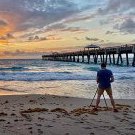
Short video of Miami under Coronavirus
OliKMIA reacted to Trek of Joy for a topic
Interesting look at a hard hit area. Good to see people taking it seriously. I'm in the Tampa area and was down there late last year for work, I shot at many of the places you show. The lack of traffic/people is quite a contrast. Chris1 point -
The Wandering DP Podcasts - worth it?
Emanuel reacted to FranciscoB for a topic
Totally worth it for someone who's interested in knowing more about cinematography and set relationships. On patreon you have some live streams, film breakdowns and other topics.1 point -

90-day free trail of FCPX or free editors?
majoraxis reacted to heart0less for a topic
DaVinci Resolve is superb, there's nothing I miss from Premiere. It's stable, power-efficient and ticks all the boxes - you can do everything in it, including editing, color grading, sound designing and VFX.1 point -

The Wandering DP Podcasts - worth it?
Emanuel reacted to heart0less for a topic
Exactly, same story here. I'm a one-man band and I doubt it'll change in the foreseeable future. Nonetheless, I find the podcasts entertaining and educational - a win-win situation, I'd say. ( : Yup, couldn't agree more. Especially now, when some YouTubers put their generic LUTs for 40$ or sometimes more.1 point


